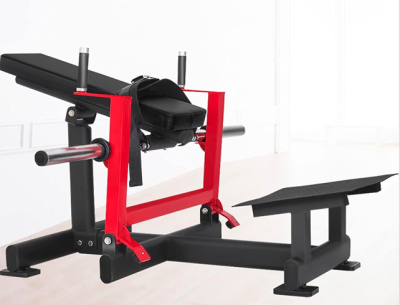Build Your Own Home Gym
Build Your Own Home Gym –
A Simple Low-Cost Set-Up Guide :
 Setting up a home gym can be a great way to stay fit and healthy without having to leave the comfort of your own home. Whether you’re looking to build muscle, lose weight, or simply maintain your current fitness level, a home gym can provide you with the tools and equipment you need to achieve your fitness goals. However, to build your own home gym can be a daunting task, especially if you’re not sure where to start.
Setting up a home gym can be a great way to stay fit and healthy without having to leave the comfort of your own home. Whether you’re looking to build muscle, lose weight, or simply maintain your current fitness level, a home gym can provide you with the tools and equipment you need to achieve your fitness goals. However, to build your own home gym can be a daunting task, especially if you’re not sure where to start.
The first step in setting up a home gym is to find the right space. You’ll need to decide where you want to set up your gym and make sure that the space has enough room for the equipment you want to use. At the very least, the space should have enough room for a yoga mat, which is all the space you’ll need to stretch and do core exercises. Once you’ve found the right space, you can start to think about the equipment you want to include in your home gym.
What You Need build your own home gym
Setting up a home gym can be an excellent way to stay in shape without having to leave your house. But before you start, you need to know what equipment you need to get started. Here is a breakdown of the essential and optional equipment you need to set up a home gym.
Build Your Own Home Gym:
Essential Equipment
The essential equipment for a home gym includes the following:
- Exercise Mat A mat provides a non-slip surface for your workout and can be used for stretching and floor exercises.
- Resistance Bands Resistance bands are versatile and can be used for strength training, stretching, and rehabilitation exercises.
- Dumbells Dumbbells are essential for strength training and can be used for a variety of exercises.
- Jump Rope A jump rope is an excellent cardio workout and can be used for warm-up exercises.
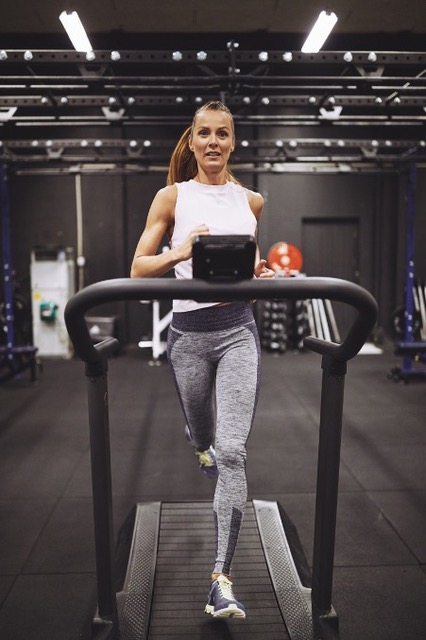
Optional Equipment
to Build Your own Home Gym
The following equipment is optional but can enhance your home gym experience:
- Adjustable Bench: An adjustable bench can be used for a variety of exercises and can be adjusted to many different angles.
- Kettlebells are excellent for strength training and can be used for a variety of exercises.
- A treadmill is an excellent cardio workout and can be used for walking, jogging, or running.
- An exercise bike is an excellent cardio workout and can be used for low-impact exercise.
- An inexpensive rowing machine is also an excellent cardio workout device which can be used for low-impact exercise. It has the added benefit of being easy to fold away if necessary.
- Multi-Gym If space is at a premium (and money less so) then consider a multi-trainer which contains 2 or more of the above suggestions all in one machine. Most such trainers take up no more https://www.product-powerhouse.net/product/yosuda-magnetic-rowing-machine-350-lb-weight-capacity-foldable-rower-for-home-use-with-lcd-monitor-tablet-holder-and-comfortable-seat-cushionspace than just one of the above machines, and most are designed to tuck away in a corner and be used from just one side. Not as cheap, but very practical.
When setting up your home gym, it’s important to consider your space, budget, and fitness goals. Start with the essential equipment and add optional equipment as you progress. Remember to consult with a fitness professional to ensure you are using the equipment safely and effectively.
In summary, to set up a home gym, you need essential equipment such as an exercise mat, resistance bands, dumbbells, and a jump rope. Optional equipment includes an adjustable bench, kettlebells, a treadmill, and ideally an exercise bike. Consider your space, budget, and fitness goals when selecting equipment, and always consult with a fitness professional to ensure safe and effective use.
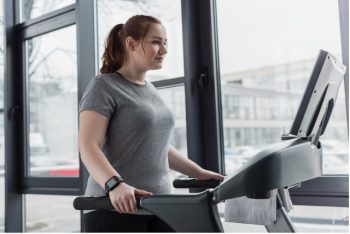
How to build your own home gym on a Budget
Setting up a home gym doesn’t have to break the bank. With some careful planning and smart shopping, you can create a workout space that fits your budget. Here are some tips for setting up a home gym on a budget.
Creating a Budget
The first step in setting up a home gym on a budget is to create a budget. Decide how much you want to spend and what equipment you need. Be realistic about your budget and don’t overspend. Consider the following when creating your budget:
- Your fitness goals
- The space you have available
- The types of exercises you want to do
- The equipment you already have
Once you have a budget in mind, stick to it. Don’t be tempted to overspend on equipment you don’t need.

Finding Affordable Equipment to Build Your Own Home Gym
Finding affordable equipment is key to setting up a home gym on a budget. Here are some tips for finding affordable equipment:
- Look for used equipment: Check online marketplaces, garage sales, and thrift stores for used equipment. You can often find great deals on equipment that is still in good condition.
- Buy basic equipment: Stick to the basics when buying equipment. You don’t need the latest and greatest equipment to get a good workout. A set of dumbbells, resistance bands, and a stability ball can go a long way.
- Check for sales and discounts: Keep an eye out for sales and discounts on equipment. Many stores offer discounts on fitness equipment during the holiday season or at the end of the year.
- DIY equipment: Consider making your own equipment. You can make a medicine ball by filling an old basketball with sand or a backpack with books. You can also make your own weight bench with some wood and foam.
In conclusion, setting up a home gym on a budget is possible with some careful planning and smart shopping. Stick to your budget and look for affordable equipment to create a workout space that fits your needs.
Building your own home gym in a Small Space
If you have limited space at home, setting up a home gym can be a challenge. But with the right equipment and a little creativity, you can create a functional workout space even in a small area. Here are some tips to help you set up a home gym in a small space.
 Choosing Space-Saving Equipment
Choosing Space-Saving Equipment
When it comes to setting up a home gym in a small space, choosing the right equipment is crucial. Here are some space-saving equipment options to consider:
- Resistance bands: These versatile bands take up minimal space and can be used for a variety of exercises.
- Adjustable dumbbells: These can replace a full set of dumbbells and take up less space.
- Folding treadmill: If you want to include cardio in your workout, a folding treadmill is a great option for a small space.
- Suspension trainer: This piece of equipment can be easily mounted to a door or wall and provides a full-body workout.
- Yoga mat: A yoga mat is a must-have for any home gym and can be used for stretching, yoga, and core exercises.
Maximizing Your Space
Once you have chosen your equipment, it’s time to maximize your space. Here are some tips to help you make the most of a small area:
- Use wall space: Mount equipment such as resistance bands, suspension trainers, and yoga mats on the wall to save floor space.
- Get creative with storage: Use storage solutions such as shelves, baskets, and hooks to keep your equipment organized and out of the way.
- Use multi-functional equipment: Look for equipment that can be used for multiple exercises, such as an adjustable bench that can be used for both strength and cardio workouts.
- Use furniture: Use furniture such as chairs, tables, and ottomans to support your exercises.
By choosing space-saving equipment and maximizing your space, you can create a functional home gym even in a small area. With dedication and consistency, you can achieve your fitness goals without leaving the comfort of your home.
RELATED ARTICLE: Low-Intensity Fitness Workouts
Building your own Home Gym in Your Basement or Garage
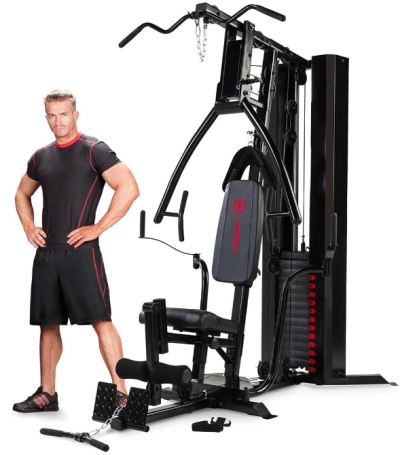
If you’re thinking about setting up a home gym, your basement or garage will be an excellent space to get started. With the right preparation and equipment, you can create a safe and effective workout space that will fit your needs for years to come.
There’s an unexpected bonus too – as word gets about, you’ll be amazed at how many more friends you now have!
Preparation and Safety Tips
Before you start setting up your home gym, there are a few things you should consider to ensure your safety and the safety of others in your home:
- Clear the space: Make sure the area you plan to use is clean and free of clutter. Remove any items that could be a tripping hazard, and ensure there is enough space for you to move around comfortably.
- Check the lighting: Make sure the area is well-lit to prevent accidents and ensure you can see what you’re doing.
- Install proper flooring: Consider installing rubber flooring or interlocking foam tiles to protect your floors and provide a non-slip surface.
- Ventilation: Make sure the space is well-ventilated to prevent overheating and ensure fresh air circulation.
Equipment Recommendations
 When it comes to equipment, there are a few key pieces that can help you get started with your home gym:
When it comes to equipment, there are a few key pieces that can help you get started with your home gym:
- Power Rack: A power rack is a versatile piece of equipment that can be used for a variety of exercises, including squats, bench presses, and pull-ups.
- Barbell and Weights: A good quality barbell and weights are essential for strength training exercises.
- Dumbbells: Dumbbells are versatile and can be used for a variety of exercises, including lunges, curls, and shoulder presses.
- Cardio Equipment: Depending on your fitness goals, you may want to consider adding a cardio machine such as a treadmill, elliptical, or stationary bike.
- Storage: To keep your equipment organized and easily accessible, consider investing in storage solutions such as shelving units or racks.
Start with the basics and gradually add more equipment as you progress. With the right preparation and equipment, you can create a safe and effective home gym that allows you to achieve your fitness goals.
Best Way to Set Up your own home gym
If you’re looking to set up a home gym, you’re making a great decision for your health and fitness. However, it’s important to do it right so that you can get the most out of your investment. Here are some tips on the best way to set up a home gym.
Designing Your Home Gym
Before you start buying equipment, you need to design your home gym space. Here are some things to consider:
- Location: Choose a space that is well-ventilated, well-lit, and has enough room for the equipment you want to use. A spare bedroom, basement, or garage can work well.
- Flooring: Choose flooring that is durable, easy to clean, and provides good traction. Rubber or foam flooring tiles are a great option.
- Mirrors: Mirrors can help you check your form and technique, which is important for preventing injuries.
- Storage: Make sure you have enough storage for your equipment and accessories. This can include shelves, racks, and storage bins.
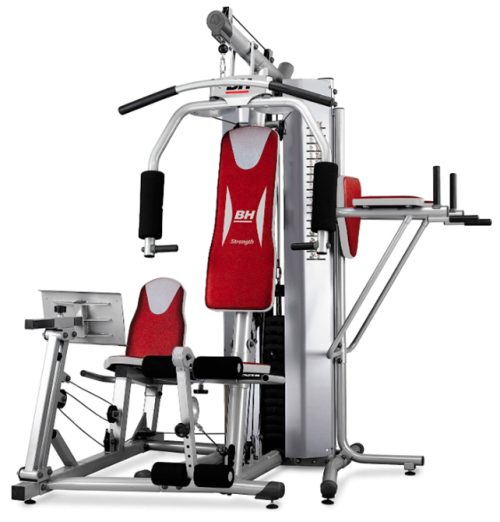
Choosing High-Quality Equipment
When it comes to choosing equipment for your home gym, it’s important to invest in high-quality pieces that will last. Here are some things to consider:
- Budget: Set a budget and stick to it. You don’t need to spend a lot of money to get a great workout.
- Equipment: Choose equipment that you enjoy using and that will help you reach your fitness goals. This can include a power rack, barbell, weights, bench, and cardio equipment.
- Quality: Invest in high-quality equipment that is durable and built to last. This will save you money in the long run.
- Safety: Make sure your equipment is safe to use and has safety features such as safety bars and stoppers.
By following these tips, you can set up a home gym that will help you achieve your fitness goals and stay healthy and fit for years to come.
Setting Up a Home Gym for Beginners
If you’re new to setting up a gym at home, it can be overwhelming to know where to start. But don’t worry, with some basic equipment and a solid workout plan, you can create an effective and convenient workout space in your own home.
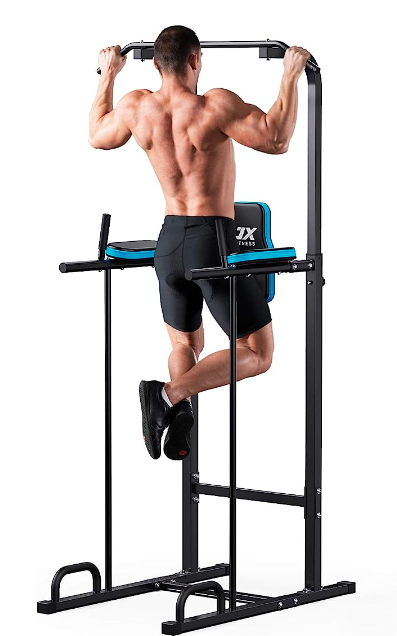
Starting with Basic Equipment
To get started, you’ll need some basic equipment to build your home gym. Here are some essential items to consider:
- Dumb-bells or resistance bands: These are versatile and can be used for a variety of exercises.
- Exercise mat: This will provide a comfortable surface for floor exercises.
- Jump rope: A simple and effective cardio option.
- Stability ball: Great for core exercises and balance training.
- Kettlebell: Ideal for full-body workouts and strength training.
Remember, you don’t need to buy everything at once. Start with a few key pieces and add to your collection as you go.
Developing a Workout Plan
Once you have your equipment, it’s time to develop a workout plan. Consider the following when creating your plan:
- Goals: Determine what you want to achieve with your workouts, whether it’s weight loss, muscle gain, or overall fitness.
- Schedule: Decide how often you will work out and for how long.
- Exercises: Choose exercises that target the muscle groups you want to work on.
- Variety: Mix up your routine to prevent boredom and challenge your body.
It’s also important to warm up before each workout and cool down afterwards. You can find plenty of workout plans and resources online to help you get started.
By starting with basic equipment and developing a workout plan, you can set up a home gym that works for you. With consistency and dedication, you can achieve your fitness goals without ever leaving your house.
Setting Up a Martial Arts Home Gym
If you’re a martial arts enthusiast, setting up a home gym is an excellent way to continue your training and stay in shape. Creating a dedicated space for your martial arts practice will not only provide you with a convenient workout location, but it will also allow you to customize your training environment to suit your needs.
Choosing the Right Equipment
When it comes to setting up a martial arts home gym, choosing the right equipment is crucial. You’ll want to select gear that is suitable for your specific martial arts discipline, as well as equipment that fits your budget and space constraints.
Some essential pieces of equipment to consider include:
- Mats: High-quality mats are essential for any martial arts practice. They provide cushioning for your joints and help prevent injuries. Consider purchasing interlocking foam mats or traditional martial arts mats.
- Punching Bag: A punching bag is a great addition to any martial arts gym. It allows you to practice your strikes and kicks and is an excellent way to build strength and endurance.
- Strength Training Equipment: Incorporating strength training into your martial arts practice can help you improve your overall fitness and performance. Consider purchasing dumbbells, kettlebells, or resistance bands.
Creating a Safe Training Environment
Safety should always be a top priority when setting up a martial arts home gym. Here are some tips to help you create a safe training environment:
- Clear the Space: Make sure that your training space is clear of any obstacles or hazards. Remove any furniture or objects that could cause injury.
- Install Proper Lighting: Good lighting is essential for a safe training environment. Make sure that your gym is well-lit, and consider adding additional lighting if necessary.
- Use Protective Gear: Always wear appropriate protective gear, such as gloves, shin guards, and headgear, when practicing martial arts.
- Install Mirrors: Mirrors can be a helpful tool for checking your form and technique. Consider installing mirrors in your gym to help you monitor your movements.
By following these tips, you can create a safe and effective martial arts home gym that will allow you to continue your training and achieve your fitness goals.
How to Build your Own Home Gym
If you have a passion for fitness and want to turn it into a business, setting up a home gym can be a great idea. With the rise of remote work and online fitness classes, more people are looking for convenient ways to stay fit at home. Here are some things to consider when setting up a home gym business.
Legal Considerations
Before you start your business, it’s important to consider the legal requirements. You may need to obtain a business license and register your business with your state. You should also consider liability insurance to protect yourself in case of accidents or injuries. Additionally, if you plan on hiring employees, you will need to comply with employment laws and regulations.
Whether setting up a business or simply allowing a few friends to use your gear at no cost, – protect yourself! It would be wise to consider putting up signs saying that they are using the equipment at their own risk. (It’s amazing how fast friends can become less friendly if they see dollar signs floating in front of their eyes!)
Equipment and Space Requirements
 When setting up a home gym business, you will need to invest in equipment that is appropriate for your target market. Consider the types of workouts you will offer and the equipment needed for those workouts. You may need to purchase weights, resistance bands, cardio equipment, and other fitness accessories.
When setting up a home gym business, you will need to invest in equipment that is appropriate for your target market. Consider the types of workouts you will offer and the equipment needed for those workouts. You may need to purchase weights, resistance bands, cardio equipment, and other fitness accessories.
Also consider the space requirements for your home gym. Ensure you should have enough space to accommodate all of your equipment and allow your clients to move around comfortably. Consider the flooring, lighting, and ventilation of your space to ensure a safe and comfortable workout environment.
In addition to equipment and space, you should also consider the overall aesthetic of your home gym. Your gym should be clean, organized, and visually appealing to attract clients.
Setting up a home gym business can be a rewarding and profitable venture. By considering the legal requirements and investing in quality equipment and space, you can create a successful business that helps people achieve their fitness goals from the comfort of their own home.
Cost of Setting Up Your Own Home Gym
Setting up a home gym can be a great way to stay fit and healthy without having to leave your house. However, the cost of setting up a home gym can vary depending on several factors. In this section, we will discuss the factors that affect the cost of setting up a home gym and provide some tips for saving money.
Factors Affecting Cost
The cost of setting up a home gym can vary depending on several factors, including:
- Equipment: The type of equipment you choose will have a significant impact on the cost of setting up your home gym. For example, if you want to buy a treadmill, it can cost you anywhere from $400 to $3,000. A set of dumbbells can cost you around $50 to $100, while a weight bench can cost you around $150 to $300.
- Space: The amount of space you have available in your home will also affect the cost of setting up your home gym. If you have a spare room that you can convert into a gym, it will cost you less than if you have to modify your garage or basement to create the space.
- Quality: The quality of the equipment you choose will also affect the cost of setting up your home gym. High-quality equipment will cost you more than lower-quality equipment, but it will also last longer and provide a better workout experience.
Tips for Saving Money
If you want to set up a home gym without breaking the bank, here are some tips that can help you save money:
- Buy used equipment: You can find used gym equipment on websites like Craigslist or Facebook Marketplace. This can help you save money on equipment that is still in good condition.
- Shop around: Don’t buy the first piece of equipment you see. Shop around and compare prices to find the best deal.
- Start small: You don’t need to buy all the equipment at once. Start with the basics and add more equipment as you go.
- DIY: You can save money by making your own equipment. For example, you can make your own weightlifting bench using a few pieces of wood and some screws.
By considering the factors that affect the cost of setting up a home gym and following these tips for saving money, you can create a home gym that fits your budget and helps you achieve your fitness goals.

Build Your Own Home Gym:
Frequently Asked Questions
What equipment do I need for a home gym?
The equipment you need for a home gym depends on your fitness goals and preferences. However, essential equipment will include dumbbells, resistance bands, as well as a stability ball, a yoga mat, and a jump rope. You can also consider investing in a treadmill, stationary bike, oand maybe an elliptical machine if you have space and budget.
How much space do I need for a home gym?
For a home gym, you need at least 6 feet by 6 feet of open space to move comfortably and safely. However, you can still perform some exercises if you have less space. Just make sure that there are no objects in your way that could potentially harm you.
What are some good home gym setup ideas?
Here are some good home gym setup ideas:
- Convert a spare bedroom or garage into a gym
- Use a corner of your living room or basement for a gym
- Install a pull-up bar in a doorway
- Hang resistance bands or TRX from a sturdy beam or tree
- Use a bookshelf or a storage unit as a weight rack and but screw it to the wall at the top – (Safety First)
How can I set up a home gym on a budget?
You can set up a home gym on a budget by:
- Buying used equipment from garage sales, Craigslist, or online marketplaces
- Making your own equipment, such as sandbags or medicine balls
- Using bodyweight exercises or resistance bands
- Using household items, such as water bottles or towels, as weights or props
What are some home gym essentials for beginners?
Some home gym essentials for beginners include:
- Dumbbells or resistance bands
- A stability ball or yoga mat
- A jump rope for cardio
- An exercise mat for floor exercises
- A foam roller for recovery
How do I start a home gym for beginners?
To start a home gym for beginners, follow these steps:
- Define your fitness goals and budget
- Choose a space for your gym and clear out the clutter
- Buy or make essential equipment
- Create a workout plan and schedule
- Start with basic exercises and progress gradually
- Stay motivated and track your progress


